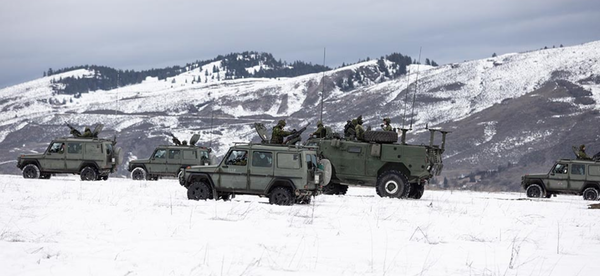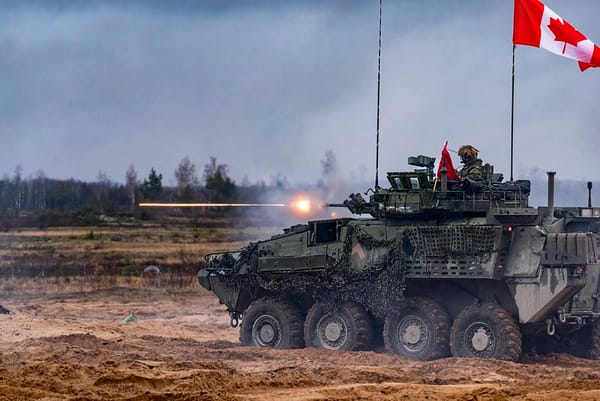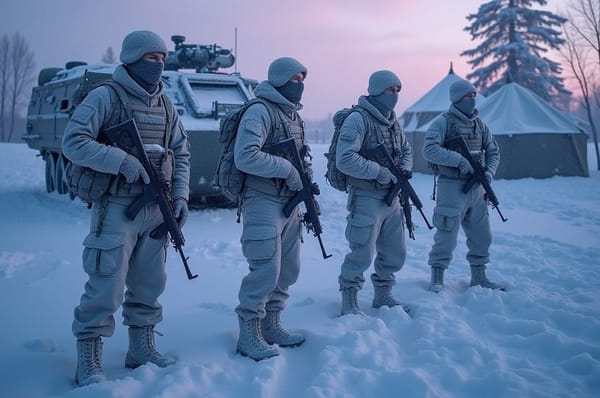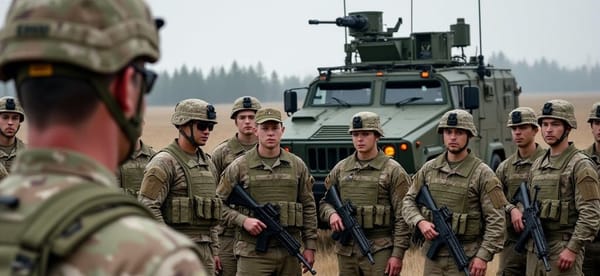Restoring Tradition: Repairing the Rank Structure of the Canadian Armed Forces
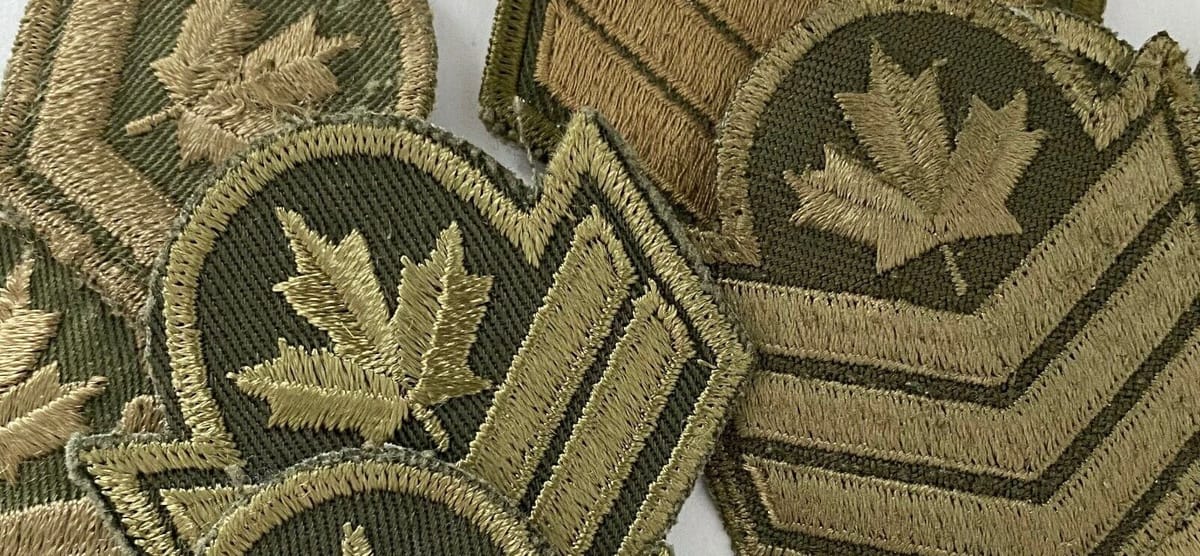
1968 Unification – The Erasure of the Army, Air Force, and Navy
In 1968, under the leadership of Defence Minister Paul Hellyer, the Canadian government forcibly unified the Royal Canadian Navy (RCN), Canadian Army, and Royal Canadian Air Force (RCAF) into a single entity: the Canadian Armed Forces (CAF). The stated goal was to improve efficiency, streamline administration, and cut costs. However, the result was the wholesale dismantling of long-standing traditions—many predating Canada itself. The backlash was immediate and severe, prompting an exodus of senior officers and NCOs who refused to serve under a system that had erased their service identities.
This upheaval came at a time when the Canadian military was already reeling from another cultural loss—the replacement of the Red Ensign with the new Maple Leaf flag in 1965. Having fought and bled under the Ensign in two world wars, many service members saw its removal as an unnecessary betrayal. Now, with unification stripping away their ranks, uniforms, and distinct service traditions, it was yet another wound—one that many would never forgive.
Unification imposed a common rank structure across all three services, creating widespread confusion. The Air Force was stripped of its traditional officer titles and ranks, adopting Army’s rank structure, which was itself altered by the elimination of Lance Corporal and Staff Sergeant and the creation of Master Corporal—an appointment treated as a rank, yet one that brought more responsibility without proper recognition or pay (to the eternal chagrin of those who hold it). Army and Air Force officers were also forced to adopt Naval-style insignia. The Navy managed to retain its traditional ranks, though it was not spared from other sweeping changes.
Distinctive service uniforms were also scrapped in favour of the universal "CF Green" uniform, dressing every soldier, sailor, and airman in the same drab olive and further eroding service identity. To add further insult to injury, The Royal Canadian Navy, Canadian Army, and Royal Canadian Air Force were stripped of their historic names, becoming the culturally devoid and uninspired Maritime Command, Land Force Command, and Air Command, respectively.
These changes triggered widespread dissatisfaction, particularly among Air Force personnel, who saw their heritage erased. The new rank structure also sowed confusion in joint and NATO operations, as Canadian forces now had rank titles and insignia unfamiliar to allied forces. The backlash eventually forced partial reversals—service-specific uniforms returned in the late 1980s, and the historic RCN, CA, and RCAF names were restored in 2011.
Yet despite these efforts, the scars of unification remain nearly 60 years later. The rank system is still muddled, and the Army and Air Force have yet to fully reclaim their lost traditions. To this day, unification’s legacy lingers, highlighting the need for further reforms to restore historical rank structures and ensure the CAF's identity, morale, and operational effectiveness.
Restoration of the Ranks
As previously mentioned, some steps toward repairing the damage of unification have already been taken, though the process remains incomplete. The 1980s saw the return of service-specific uniforms, finally abandoning the misguided "everyone in green" experiment that had stripped the Navy, Army, and Air Force of their distinct visual identities. This was an important first step in restoring pride and tradition within the branches. Further progress was made in 2011, when the Royal Canadian Navy (RCN), Canadian Army (CA), and Royal Canadian Air Force (RCAF) were officially reinstated as distinct entities, undoing the uninspired bureaucratic labels of "Maritime Command," "Land Force Command," and "Air Command." Alongside this, many Army corps, branches, and units reclaimed their historic titles, restoring another crucial piece of pre-unification heritage.
The Navy was permitted to restore its “executive curl” insignia in 2010, a small but symbolic victory in reclaiming its traditional identity. However, progress was soon met with new disruptions. In 2020, the federal government once again tampered with naval ranks, replacing "Seaman" with "Sailor" under the banner of gender neutrality—despite the fact that the Anglo-Saxon root of "man" was originally gender-neutral. Ironically, in attempting to modernize naval terminology, the change instead disrupted long-standing tradition. While the shift from Seaman to Sailor may be understandable, the decision to abolish the traditional rank prefixes of "Ordinary," "Able," and "Leading" was far more perplexing. These ranks, used for centuries in navies around the world, were replaced with the uninspired designations “Sailor Class 1, 2, and 3”—a bureaucratic revision that stripped the ranks of their historical and professional significance. Rather than reinforcing naval identity, these changes further eroded it, demonstrating yet another failure to appreciate the traditions that define military culture.
While these partial restorations have helped reverse some of the damage caused by unification, they remain incomplete. The Army and Air Force have yet to fully reclaim their traditional rank structures, and inconsistencies persist—particularly within the NCO progression system, where ranks like Sergeant and Petty Officer Second Class (PO2) are ambiguously classified as both NATO OR-5 and OR-6. To truly restore Canada’s military heritage, further action is needed to eliminate these discrepancies and ensure rank structures reflect their historical and functional integrity.
Master Corporal
First, let’s address the orphaned appointment/rank of Master Corporal (Sailor), using the Army as a reference. Master Corporal was originally introduced during the 1968 unification to fill the gap left by the elimination of Lance Corporal and Staff Sergeant, providing an intermediary leadership role between Corporal and Sergeant. Although treated as a rank in practice, it remains officially an appointment, with only a modest salary increase. Those appointed to Master Corporal take on significantly greater responsibilities and leadership duties, yet the financial compensation remains minimal amounting to only about $200 gross per month as of 2025. Furthermore, there is widespread reluctance to pursue the Master Corporal appointment, particularly in technical trades, where the perceived benefits are minimal. This has led to the emergence of the “Corporal for Life” phenomenon—a group of highly experienced and skilled members who remain stagnated in rank, undercompensated for their expertise and often overlooked by superiors due to their lower standing in the hierarchy. This dynamic undermines morale and breeds frustration, as junior members witness the dissatisfaction of these seasoned "Corporals for Life," creating instability within the ranks and discouraging professional development.
The best solution to the Master Corporal issue is a two-pronged approach: reinstate the traditional ranks of Lance Corporal and Staff Sergeant while simultaneously restructuring Master Corporal as an optional, terminal rank with proper recognition and compensation. Restoring Lance Corporal would reintroduce a natural progression for junior NCOs, while bringing back Staff Sergeant would provide an experienced leadership tier above Sergeant. Meanwhile, transforming Master Corporal into a respected terminal rank—rather than an underpaid stepping stone—would give highly skilled personnel a viable career path without forcing them into stagnation or unwanted promotion.
Consider this reformed rank structure:

This reform would ensure that those excelling in leadership and technical roles receive the pay, authority, and respect they deserve, while also creating a clearer and more functional NCO structure. Properly implementing these changes would boost morale, improve retention, and restore stability within the CAF’s enlisted ranks.
Restored and Reformed Rank Structure
Royal Canadian Navy

Canadian Army

These modest yet impactful reforms restore the traditions of the three services, ensure consistency across the CAF in terms of responsibility, pay, and clarity, and bring the rank structure fully in line with NATO standards. These reforms must also be extended to RCAF officers, who currently sport Army titles. RCAF Ranks could continue the trend of reflecting Army ranks, or be returned to pre-unification ranks (Airman, Flight Sergeant, etc)
Final Argument
Restoring the traditional rank structures of the Canadian Armed Forces is not merely an exercise in nostalgia—it is a necessary step toward rebuilding morale, improving retention, and ensuring a clear and functional command structure. The legacy of unification continues to cause confusion and dissatisfaction within the ranks, and while some corrective measures have been taken, they remain incomplete.
By reinstating lost ranks such as Lance Corporal and Staff Sergeant, while simultaneously transforming Master Corporal into a respected, terminal rank with proper recognition and compensation, the CAF can correct a decades-old imbalance that has left skilled personnel undervalued and leadership structures inconsistent. These reforms, along with restoring traditional RCAF officer ranks, will ensure that each branch of the military regains its distinct identity while maintaining cohesion within the larger force.
Restoring tradition is not about resisting change—it is about acknowledging the value of military heritage, respecting the service of those who came before, and ensuring that rank structures serve a practical and effective purpose. A military that takes pride in its identity is a military that is stronger, more united, and better prepared to meet the challenges of the future.
